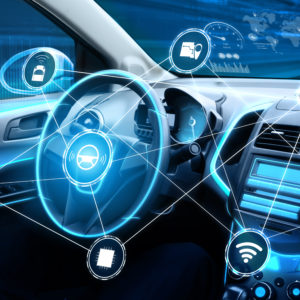The automotive industry has recently installed Advanced Driver Assistance Systems (ADAS) in many production vehicles. ADAS is a set of innovative technologies that are designed to enhance vehicle safety, improve driving comfort, and improve the driver’s experience and overall quality of life. These systems use sensors, cameras, radar, lidar, and other sophisticated equipment to assist the driver in various aspects of vehicle operation. ADAS is designed to provide warnings, automate tasks, and in some cases, take corrective actions to prevent and mitigate collisions.
Some key ADAS components include features like adaptive cruise control, lane departure warning, automotive emergency braking, parking assistance, and even autonomous driving in certain environments.
ADAS is a complex system that needs to be properly calibrated so that it can function properly. In this article, we’ll answer what ADAS calibration is, its role in keeping you safe, and when it should be conducted.
When Should You Calibrate Your Vehicle’s ADAS?
Unlike other vehicle systems, the vehicle can’t tell you whether its ADAS sensors are out of calibration. Luckily, ADAS usually doesn’t need to be calibrated at a specific interval. The system can keep itself calibrated in normal use. So, is ADAS calibration even necessary?
The sensors only need to be recalibrated when something out of the ordinary occurs and disturbs its calibration. Replacing components like the windshield, bodywork, or sensors typically warrants an ADAS calibration afterward. Aftermarket modifications like lift kits, lowering kits, and new-size wheels can also affect ADAS functionality and require recalibration.
Automotive professionals need to know and follow OEM standards regarding ADAS calibration, so that a vehicle’s ADAS properly functions.
Recalibrating sensors means adjusting their position and pointing them in a specific direction. Sensors that are out of alignment by a fraction of an inch or even one degree can have a significant effect on vehicular features like automatic emergency braking.
What is the ADAS calibration process? It typically involves checking the manufacturer’s specifications so you’re aware of all the sensors, cameras, and their locations. The cameras also need to be cleaned and the vehicle’s tires need to be inflated to their recommended pressure so that the vehicle is raised to the correct height.
ADAS calibration isn’t done periodically, but checking some components like cameras can be a good idea. Sometimes, dirt can accumulate on the lens, obscure its vision, and affect its operation.

The Importance of ADAS Calibration
ADAS is meant to add additional layers of safety for you and your passengers. That said, there are three other specific reasons why proper calibration is important.
For Features to Work Properly and Reliably
Several sensors in the ADAS measure the vehicle’s distance to objects around it. These include the radar, lidar, and ultrasonic sensors, and they play a crucial role in features like emergency braking, adaptive cruise control, and autonomous driving. If these sensors aren’t properly aimed in the right direction, then these systems might not be able to respond appropriately to potential hazards.
A miscalibrated sensor doesn’t necessarily mean that the part is faulty, but it can compromise your safety.
Prevent False Alarms
Accurate calibration minimizes the risk of false alarms or unnecessary ADAS interventions. False alarms can be frustrating and can even cause distrust in the system.
Legal Compliance
Failure to calibrate your ADAS might result in noncompliance with vehicle safety laws, which can result in fines or legal action.
Calibrating the ADAS involves connecting a calibration device to the vehicle’s OBD-II port. There are two ways a vehicle can be calibrated. Static calibration involves placing the vehicle on a flat, open space. There should also be no direct sunlight and reflective surfaces nearby, so the calibration process might be ideal on overcast days or indoor lots. There’s also dynamic calibration, where a vehicle needs to be driven at certain speeds and conditions.
The calibration instructions typically instruct the technician to precisely point the cameras at the appropriate angles. Finally, they’ll test the system to check if the sensors have been properly calibrated.
As the automotive industry continues to embrace technological advancements, ADAS plays a key role in improving road safety. However, the effectiveness of ADAS is dependent on proper calibration. Carrying out calibration following manufacturer guidelines and after specific events ensures that these advanced systems operate optimally, providing drivers with enhanced safety and a better driving experience.
Any information provided on this Website is for informational purposes only and is not intended to replace consultation with a professional mechanic. The accuracy and timeliness of the information may change from the time of publication.















